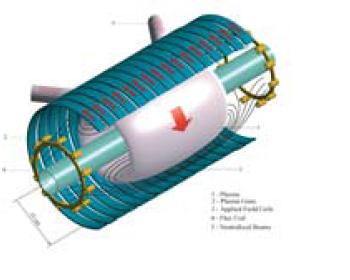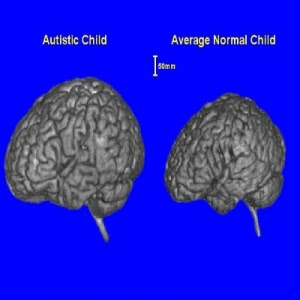...optimists and idealists -- with their ignorance about the truths of human nature and human society, and their naive hopes about what can be changed -- have wrought havoc for centuries....instead of utopian efforts to reform human society or human nature, we [should] focus on the only reform that we can truly master -- the improvement of ourselves through the cultivation of our better instincts. _OUP Review of "Uses of Pessimism"
Sure as I know anything, I know this - they will try again. Maybe on another world, maybe on this very ground swept clean. A year from now, ten? They'll swing back to the belief that they can make people... better. And I do not hold to that. _Captain Malcolm Reynolds
There is something deep in human nature which has resisted change -- despite the best efforts of crusaders, utopians, religionists, and wishful thinkers -- for many [tens of?] thousands of years. After countless failures to reform the human spirit, most utopians are unfazed. If they can only grab enough power and control over how resources are distributed, they are sure that they can bring perfection to the land, under their own benevolent leadership. "The land will heal, the sea levels will begin to subside, and every man will say to every other man, you are my brother." And so on.
Philosopher Roger Scruton -- author of
The Uses of Pessimism -- takes a somewhat more reluctant view:
The belief that humanity makes moral progress depends upon a wilful ignorance of history. It also depends upon a wilful ignorance of oneself – a refusal to recognise the extent to which selfishness and calculation reside in the heart even of our most generous emotions, awaiting their chance. Those who invest their hopes in the moral improvement of humankind are therefore in a precarious position: at any moment the veil of illusion might be swept away, revealing the bare truth of the human condition. Either they defend themselves against this possibility with artful intellectual ploys, or they give way, in the moment of truth, to a paroxysm of disappointment and misanthropy. Both of these do violence to our nature. The first condemns us to the life of unreason; the second to the life of contempt.
...In order to see human beings as they are, therefore, and to school oneself in the art of loving them, it is necessary to apply a dose of pessimism to all one’s plans and aspirations. _GloomMerchant
In another piece, Scruton presents a paradoxical recommendation for how to teach children to think for themselves, logically and clearly:
...children are drawn to magic...they spontaneously animate their world with spirits and spells...they find relief and excitement in stories in which the heroes can summon supernatural forces to their aid and vanquish untold enemies – these facts reflect layers of deep settlement in the human psyche. But they also remind us that, in the life of the child, belief and imagination are not to be clearly distinguished, and that both serve other functions than the pursuit of truth.
...humanists should wake up to this point, and be careful when they seek to deprive their children of enchantment, or to replace their spontaneous fantasies with the cold hard facts of empirical science. It could well be that religion is a better discipline than pop science, when it comes to shaping the rational intellect, and that [we can offer our] children more in the way of a solid foundation, by anchoring their imagination in sacred stories and religious doctrines, than they are likely to be offered by those “Darwinian fairy tales’” as David Stove has called them, which have gained such currency in the wake of Dawkins and Hitchens.
In response to a child’s metaphysical curiosity grown-ups can say that everything has a scientific explanation. But they will know that this is a lie. The proposition that everything has a scientific explanation does not have a scientific explanation – it describes an amazing fact about our universe, a point where reasoning falls silent. There are many such points, as anyone who has children knows: why is there anything? Why should I be good? What existed before the Big Bang? What is consciousness? You can wrestle with these questions through philosophy, but science won’t answer them.
Children have an inkling of this. They also recognise that behind these questions lies a huge void – an emptiness which must be filled with love and reassurance, if their existence is not to seem like an accident. _Art_of_Certainty
Utopians try so hard to purge their children's minds of falsehood and "error", to create the perfect children of rational thought, capable of seeing through all the corrupt fables of the past. Except...children will be who they will be. You cannot make boys into girls or girls into boys without destroying who they are. And you cannot make humans into angels without ruining the essence of what they are. And still the utopians continue to try -- until they finally throw their hands up in complete exasperation at and condemnation of the utter evil of those who do not think along the same lines as themselves, the utopians.
The disgusted dismissal of homo rapiens and all his works that we find spelled out by John Gray in Straw Dogs is not a form of pessimism. It is an attempt to dismiss humanity entirely, as a kind of plague on the face of the earth. That kind of misanthropic nihilism is of no use to us. It removes the ground from all our values, and puts nothing in their place. _GloomMerchant
At that point, they often begin to plot and fantasize the great dieoff, to cleanse the otherwise pristine Earth of the incorrigible human demons who infest the lands and oceans. Fortunately, utopians are as incompetent in planning the great dieoff as they are in most other aspects of their lives.
The point is not to resist all change or improvement of humans. But any lasting change for the better is likely to happen from the bottom up, not from the top down.
Nothing illustrates the different approaches to a better world than the contrast between the French and American revolutions of the late 19th century.
The primary difference in causes that led to the American Revolution and the French Revolution was based in the world view of the innate goodness or innate evil of man. _Hyperhistory
Not all utopians believe in the innate goodness of men -- sometimes they only believe in the innate perfectibility of men. But utopias born of such ideas all come to a bitter end.
Every child has to learn to think for himself, from the beginning. But he must have a beginning from which to start.
The need for foundations is quite clearly an adaptation, and these foundations must provide the promise of protection and love, if they are to fit the new organism for its brief time in the world. If that is so, you are not going to eliminate the need for faith: the best you can do is to withhold all objects of faith, so that a child goes hungry into the life to which he or she is destined. More often than not, a humanist education will leave a child exposed to massive and mind-clogging superstitions of the Harry Potter and Star Wars kind. But these superstitions contain far less in the way of insight than is contained in the first chapter of Genesis.
Religious stories are also the result of natural selection – though selection at another level: they have come down to us because they have fulfilled a moral need. They have survived refutation because they contain, beneath their superficial falsehood, the moral truths that people need, when they must order their lives by good examples. _The Art of Certainty
This is true not only of religious stories, but of all the mythology and lasting moral fables from antiquity. Children must have some kind of foundation that transcends deductive logic, because that is how minds begin. Then, later, when they choose to either reshape or reaffirm their beliefs, they will have a sense of having decided for themselves, and feel stronger for it.
Yes, humans can make choices that make them better. Improved nutrition of mother and child can make humans stronger, smarter, taller, and sometimes capable of clearer thought. But a power structure that attempts to legislate morality, to engineer the moral and ideological purity of the human souls of its citizens -- that power structure is morally bankrupt, and deserves to die quickly. If it is allowed to continue, its leaders will eventually decide that the recalcitrant citizens do not deserve the benefit of the leaders' great wisdom. Then, beware.
This question has been acquiring an ever greater urgency over the past century -- even longer. It is now coming to a head in the demographic and economic crises of many of the world's most advanced nations. A culture that has rested on its own laurels, that has comforted itself with mental images of its own progressive improvement, is soon to be reawakened to a coarse and unruly history.
Originally published at
Al Fin blog. Subsequently posted here at Al Fin the Next Level on 16 July 2010, it is being re-published here in honour of the coming 2011 - 2012 holiday season in the hopes that readers will face the future with an optimism built upon a solid foundation of gritty realism and competent preparation.






















